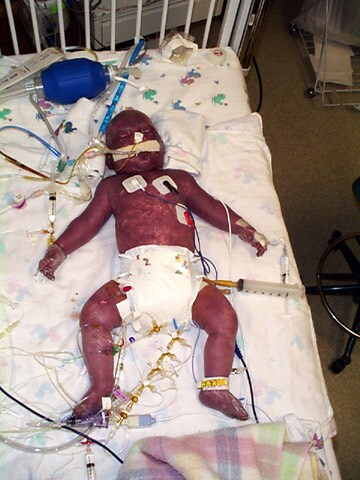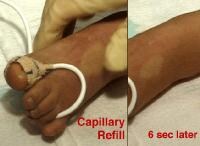Sunday, August 9, 2009
one of DEADLIEST disease
DENGUE FEVER
Dengue has been called the most important mosquito-transmitted viral disease in terms of morbidity and mortality. Dengue fever is a benign acute febrile syndrome occurring in tropical regions. In a small proportion of cases, the virus causes increased vascular permeability that leads to a bleeding diathesis or disseminated intravascular coagulation (DIC) known as dengue hemorrhagic fever (DHF). Secondary infection by a different dengue virus serotype has been confirmed as an important risk factor for the development of DHF. In 20-30% of DHF cases, the patient develops shock, known as the dengue shock syndrome (DSS). Worldwide, children younger than 15 years comprise 90% of DHF subjects; however, in the Americas, DHF occurs in both adults and children.
Dengue is a homonym for the African ki denga pepo, which appeared in English literature during an 1827-28 Caribbean outbreak. The first definite clinical report of dengue is attributed to Benjamin Rush in 1789, but the viral etiology and its mode of transmission via mosquitos were not established until the early 20th century.
Pathophysiology
Dengue viral infections frequently are not apparent. Classic dengue primarily occurs in nonimmune, nonindigenous adults and children. Symptoms begin after a 5- to 10-day incubation period. DHF/DSS usually occurs during a second dengue infection in persons with preexisting actively or passively (maternally) acquired immunity to a heterologous dengue virus serotype. Illness begins abruptly with a minor stage of 2-4 days' duration followed by rapid deterioration. Increased vascular permeability, bleeding, and possible DIC may be mediated by circulating dengue antigen-antibody complexes, activation of complement, and release of vasoactive amines. In the process of immune elimination of infected cells, proteases and lymphokines may be released and activate complement coagulation cascades and vascular permeability factors.
Frequency
United States
Between 1990 and 1992, reports of 10 imported cases of dengue fever were published. While still rare, this is a dramatic increase from 1 case reported during the period from 1987 to 1989; this probably results from increases in air travel and an exotic vector that has adapted to cold climates. Cases along the Texas-Mexico border have been cited recently.
International
Dengue virus causes about 100 million cases of acute febrile disease annually, including more than 500,000 reported cases of DHF/DSS. Currently, dengue is endemic in 112 countries. The world's largest known epidemic of DHF/DSS occurred in Cuba in 1981, with more than 116,000 persons hospitalized and as many as 11,000 cases reported in a single day. Current outbreaks can be monitored via the ProMed listserve by contacting owner-promed@promedmail.org.
Mortality/Morbidity
- Treated DHF/DSS is associated with a 3% mortality rate.
- Untreated DHF/DSS is associated with a 50% mortality rate.
Race
Ethnicity is nonspecific, but the disease's distribution is geographically determined. Fewer cases have been reported in the black population than in other races.
Sex
No predilection is known; however, fewer cases of DHF/DSS have been reported in men than in women.
Age
All ages are susceptible. In endemic areas, a high prevalence of immunity in adults may limit outbreaks to children.
Clinical
History
- Fever
- Abrupt onset, rising to 39.5-41.4°C
- Accompanied by frontal or retro-orbital headache
- Lasts 1-7 days, then defervesces for 1-2 days
- Biphasic, recurring with second rash but not as high
- Rash
- Initial rash transient, generalized, macular, and blanching; occurs in first 1-2 days of fever
- Second rash occurring within 1-2 days of defervescence, lasting 1-5 days
- Second rash morbilliform, maculopapular, sparing palms and soles
- Occasionally desquamates
- Bone pain
- Absent in dengue hemorrhagic fever (DHF)/dengue shock syndrome (DSS)
- After onset of fever
- Increases in severity
- Not associated with fractures
- May last several weeks
- Most common in legs, joints, and lumbar spine
- Miscellaneous symptoms
- Nausea and vomiting
- Cutaneous hyperesthesia
- Taste aberrations
- Anorexia
- Abdominal pain (severe in DHF/DSS)
Physical
- Fever
- Signs of intravascular volume depletion
- Hypotension with narrowed pulse pressure (see Media file 1)
A child with dengue hemorrhagic fever or dengue shock syndrome may present severely hypotensive with disseminated intravascular coagulation (DIC), as this severely ill PICU patient did. Crystalloid fluid resuscitation and standard DIC treatment are critical to the child's survival.
A child with dengue hemorrhagic fever or dengue shock syndrome may present severely hypotensive with disseminated intravascular coagulation (DIC), as this severely ill PICU patient did. Crystalloid fluid resuscitation and standard DIC treatment are critical to the child's survival.
- Delayed capillary refill (see Media file 2)
Delayed capillary refill may be the first sign of intravascular volume depletion. Hypotension usually is a late sign in children. This child's capillary refill at 6 seconds was delayed well beyond a normal duration of 2 seconds.
Delayed capillary refill may be the first sign of intravascular volume depletion. Hypotension usually is a late sign in children. This child's capillary refill at 6 seconds was delayed well beyond a normal duration of 2 seconds.
- Hemorrhagic manifestations
- Positive tourniquet test
- Petechiae, purpura, epistaxis, gum bleeding, GI bleeding, menorrhagia
- Rash
- Hepatomegaly (inconsistent)
- Generalized lymphadenopathy
Causes
- Dengue virus types 1-4
- Aedes aegypti mosquito vector
- Human-mosquito-human cycle
- Found in tropical regions, especially Southeast Asia
H1N1 FLU
The most important precaution that you can take to avoid getting the flu is by following proper hygiene practices:
- Cover your nose and mouth with a tissue when you cough or sneeze, then throw the tissue in the trash.
- Wash your hands with soap and water frequently and especially after you cough or sneeze. Alcohol-based hand cleaners are also effective.
- Avoid close contact with sick people.
- Avoid touching your eyes, nose or mouth.
- Regularly disinfect communal areas and any shared equipment.
- Visit the UCSF Infection Control website for infection control guidance
- Stay home from work or school. Go home if you become ill at work or school.
- Limit contact with others in order to keep from infecting them.
- Follow your customary departmental/programmatic procedures for sick leave notification.
- Contact your personal healthcare provider for severe symptoms or if your symptoms do not resolve.







